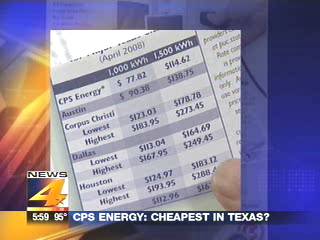 Hey Look! A press release from SEED Coalition and Public Citizen:
Hey Look! A press release from SEED Coalition and Public Citizen:
60 Day Clock For Nuclear Opponents Starts Ticking;
Luminant Moves Forward Toward Expansion of Comanche Peak Nuclear Plant
Reactor Design Not Ready for Primetime
The Nuclear Regulatory Commission posted notice today on the federal register of Luminant’s application to build two reactors at the Comanche Peak nuclear plant site, southwest of Fort Worth. Citizens now have only 60 days to prepare and present their legal case in opposition.
The reactor design (US-APWR) has not been approved by the NRC and it has never been built anywhere in the world. Mitsubishi Heavy Industries Ltd. submitted the US-Advanced Pressurized Water Reactor (US-APWR) for design certification on December 31, 2007, but the review will take the NRC at least until 2011 to complete.
“This fast-tracked combined construction and operating license process was rationalized based on the assumption that new reactors would only use pre-certified designs, but the Comanche Peak reactor design is not approved yet. Not only does this put a huge burden on the public to quickly learn what’s happening and become involved within only 60 days, but it also puts pressure on the NRC to rubberstamp designs that should have extra scrutiny,” said Smith.
“The streamlined process is designed to cut citizens out and limit public involvement in the licensing of two reactors that could cost $22 billion before cost overruns,” said Karen Hadden, executive director of the Sustainable Energy and Economic Development (SEED) Coalition. “It makes the fast-tracking of TXU’s coal plants in Texas look slow.”
Comanche Peak Unit One ran ten times over budget and was years late coming online. An untested reactor design increases the likelihood of similar problems occurring again and soaring rate hikes that would result.
“If safety was a real concern, the three processes all occurring simultaneously would be take one at a time. This rush increases risks of safety oversight and problems from faulty design and construction” said Hadden. “Reactor designs should be analyzed first, and if and when the NRC deems them adequate, a construction license application should be allowed. If the plant has no major construction flaws after completion, then the operating license should be decided.” (more…)
Read Full Post »
 Hey Look! A press release from SEED Coalition and Public Citizen:
Hey Look! A press release from SEED Coalition and Public Citizen:



